Wei Zheng began his career in visual effects in 1998 at ILM. He then worked at Digital Domain and joined Artemple Hollywood in 2012. He has worked on various shows including Minority Report, Zodiac, Mindhunter and Mank. Today he talks to us about his new collaboration with David Fincher.
Yabin Morales has been with Ollin VFX for over 15 years and has worked on projects such as The Curious Case of Benjamin Button, Jumanji: Welcome to the Jungle, The Boys and Outer Range.
With over twenty years’ experience in visual effects, James Pastorius has worked on many films such as Gone Girl, Jumanji: The Next Level, Uncharted and Ferrari. In 2007, he founded his own studio, Savage VFX.
How did you get involved on this movie?
Wei Zheng // In 2006, I was very fortunate to have the privilege of working on Zodiac. Ever since, except for The Social Network and House of Cards, I’ve had great opportunities to work for David on all his films and 2 seasons of Mindhunter.
Yabin Morales // Ollin has been collaborating with DF and his team since 2007, Zodiac being our first project. We have been truly blessed by having had the opportunity to work with him and all of his amazing team since.
James Pastorius // We’ve been working with David, Peter and their team for almost 20 years. On some projects they’ll bring us on early, sometimes while they are still shooting, to start R&D on a specific effect. It was about 18 months ago, we got the call to start doing look development of a bullet blasting through a windshield in slow motion. It was for The Killer.
How was the collaboration with Director David Fincher?
Wei Zheng // It’s a blessing. I have learned a lot from David and feel very lucky with David guarding my work.
Yabin Morales // Working with him and his team has been an incredible experience. Fincher knows exactly what he wants and gives clear creative direction. At the same time, he’s all about creative freedom and is open to considering different ideas if they enhance the story telling. An unusual combination we cherish every time we get to work with him.
James Pastorius // Every project has its challenges, some problems are self-inflicted, either through error or lack of time. That’s just the nature of the beast. VFX artists are the fixers. Fincher’s projects are different. Because everything is shot so meticulously, and the plan for the final look in post is so well thought out, we get to use our time to execute the plan.
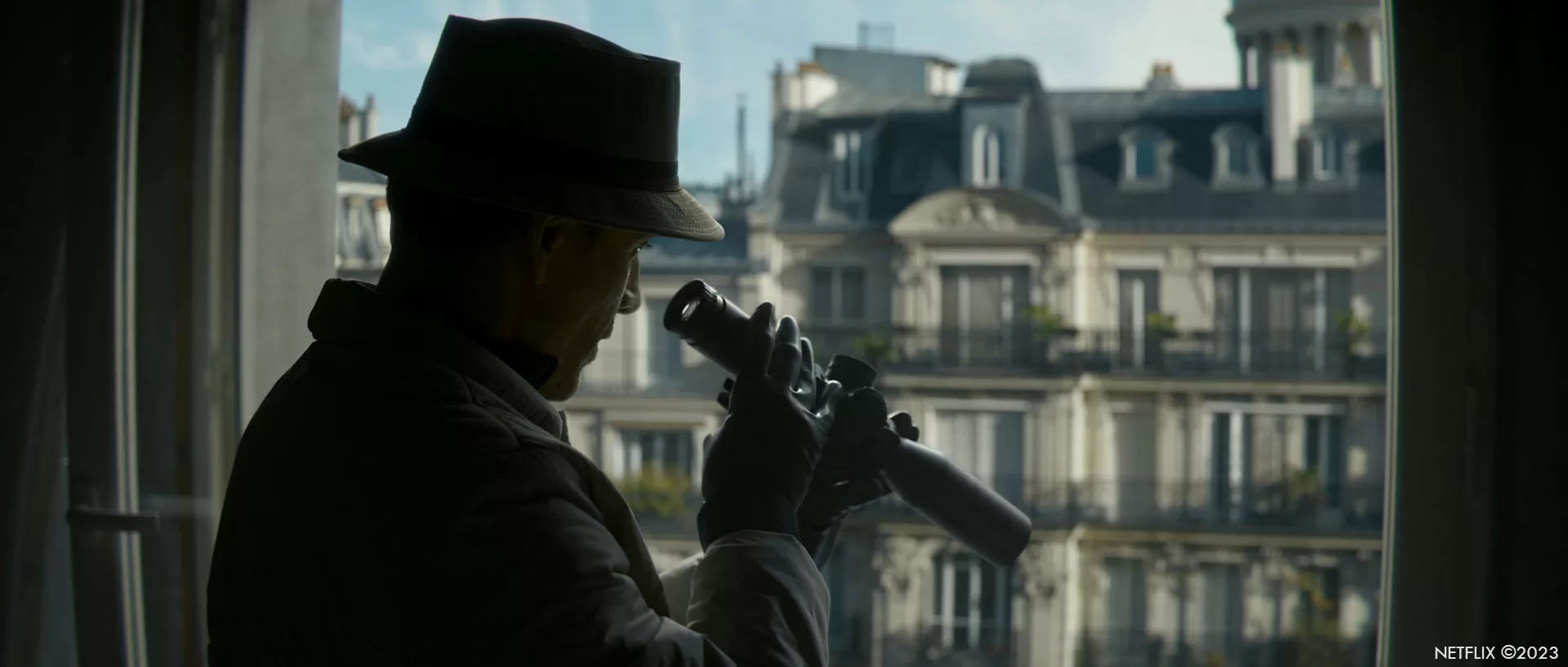
What was his approach and expectations about the visual effects?
Wei Zheng // David is very savvy with digital technology. He knows as much as any VFX supervisor out there. He always shoots the most clean, effective and ideal plate for visual effects teams to work with. The expectation for the visual effects works would be realistic, supportive, and invisible.
James Pastorius // I believe his approach to visual effects is much like his approach while filming. And he expects his vendors to be as dialed in as he is.
How did you organize the work your VFX Producer?
Wei Zheng // Peter Mavromates is one of the producers of the film. He runs the visual effects works as well. David and Peter are the persons who assign visual effects work to different teams based on their experience with each team.
Yabin Morales // Working with Peter Mavromates and his team is always amazing – it’s practical and organized. There’s a solid grip on every effect, ensuring we have the time and resources needed for each shot. Peter is a true collaborator and understands very well the process behind the making of visual effects, which makes you feel you’re dealing with a partner at the same time as a client. Again, very unusual.
James Pastorius // Over the years our VFX Producer Brice Liesveld has worked closely with Peter’s team to create a seamless I/O pipeline between us. Even with this project’s demands – 6k sometimes 8k shots, we had no problem cranking out multiple iterations during look dev. And delivering HDR quicktimes to editorial and EXRs to their colorist was almost completely automated. Notes were disseminated directly from Fincher to me through the PIX system and in front of artists quickly, usually within an hour of submission.
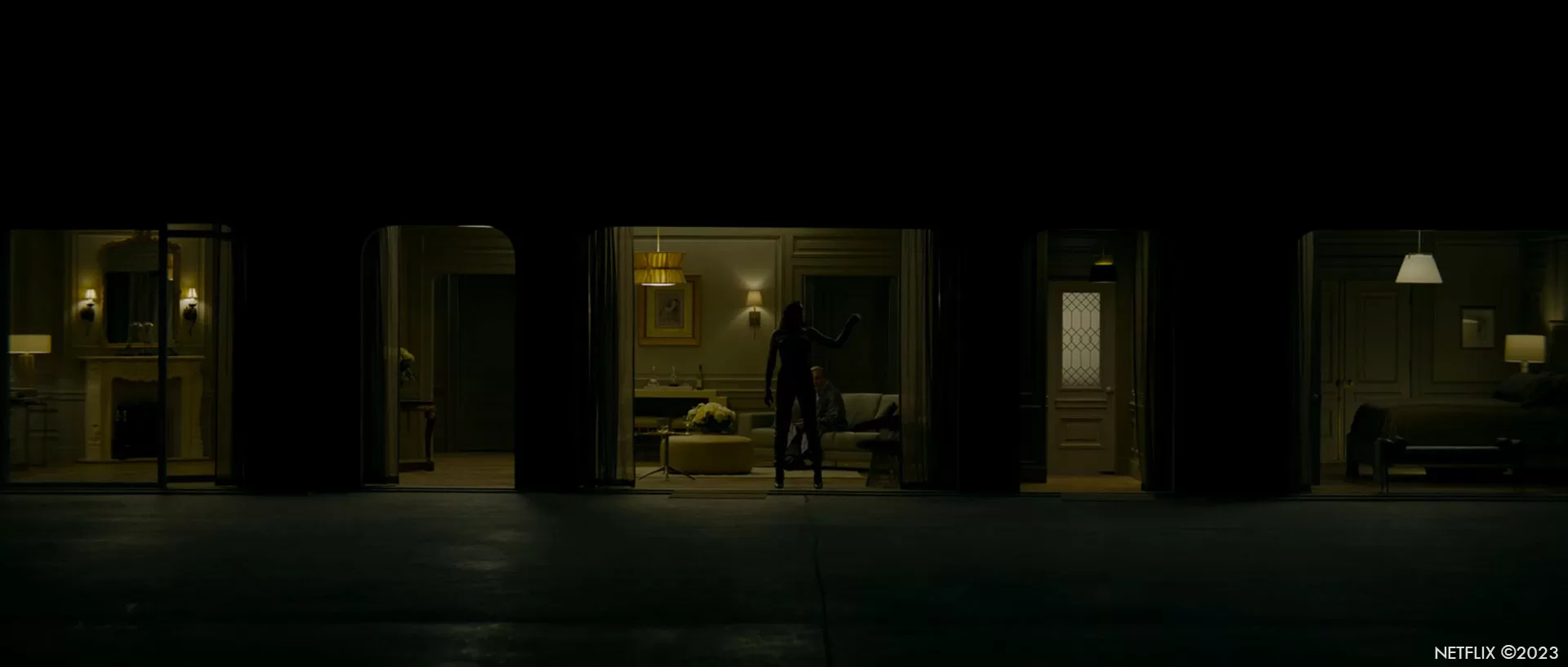
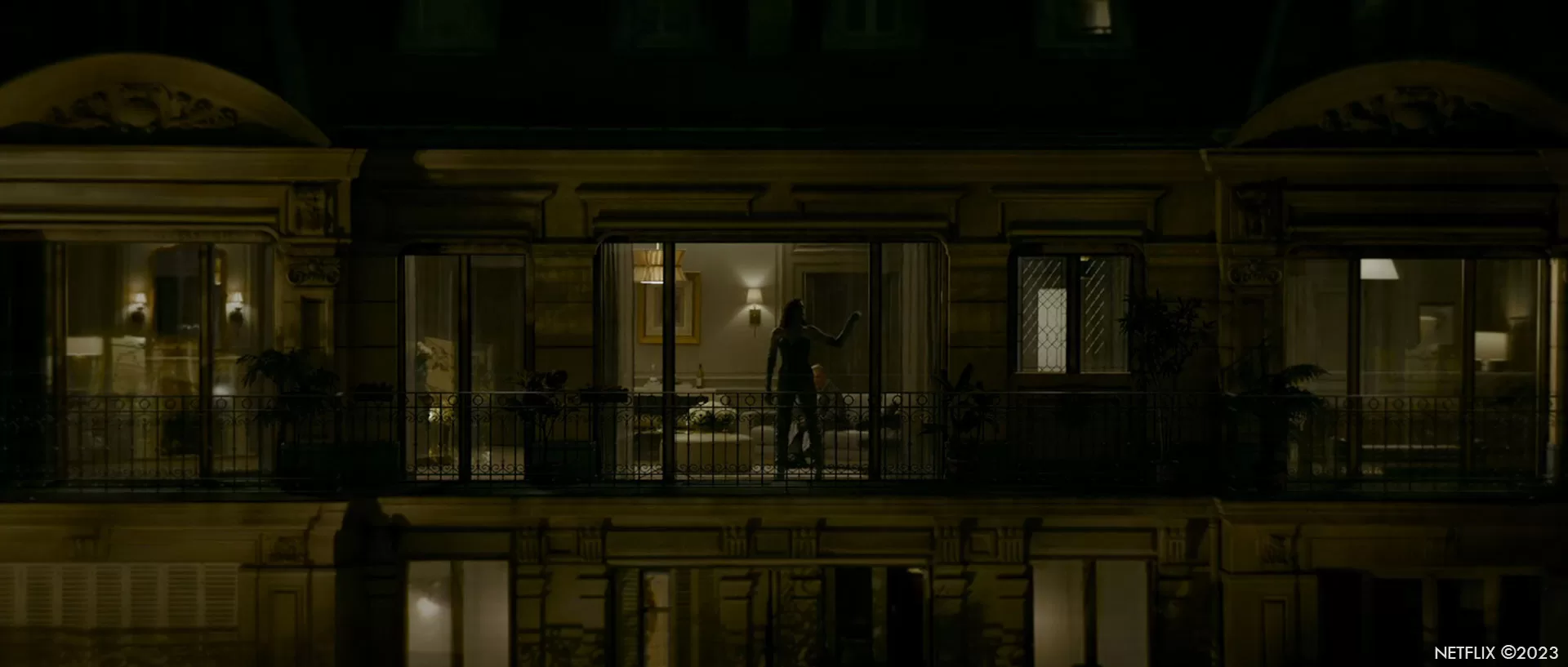
Can you elaborates about the environment work and especially for the Paris sequence?
Wei Zheng // The Paris sequence is the main part of our work here at Artemple. David shot the plates of the WeWork office interior and the inside window element of the target building across the way on stage. Visual Effects helped create the building facades of the target building, the pantheon behind, and the surrounding Paris view. When working on the shots, we were taking cues from the beautifully shot plates to build our environment, matching the mood, lighting, color and time of the day. Through Google Maps, we studied the real location where production shot the reference, and were able to build a digital layout of the location for reference when building the CG facade for each individual shot. Evidently, there are manipulations happening here or there while recreating the target building. David didn’t want to feel like The Killer is shooting into a fish tank later, so he wanted two out of the six windows to have half walls with diamond shaped metal patterns framed in the vintage glass. The other four windows have different widths and heights. Initially, we settled on the balcony with stone balusters. Later, we changed to metal railing out of concern that stone balusters might block the performance inside and interfere with the trajectory of the bullet flying. It’s fun to composite all these elements together to get the shot, for example putting in the preferred window inset elements with the correct acting captured.
What kind of references and influences did you received for the environments?
Wei Zheng // Production provides us with fine still photos of the buildings in different times of day that were the base reference for recreate the buildings digitally. The beautifully shot plates guide us on the right track in terms of the look, feel etc while building the environment.
Yabin Morales // David Fincher is very meticulous with his direction, specifying textures, colors, atmospheres and other details. Our job is to use that and find different options to bring his vision to life. He pushes the boundaries and encourages new options. For the Dominican Republic scenes, he wanted that aged, humid, jungle vibe. We added the damp walls texture, moss, palm trees, banyan trees and endemic vegetation where necessary.
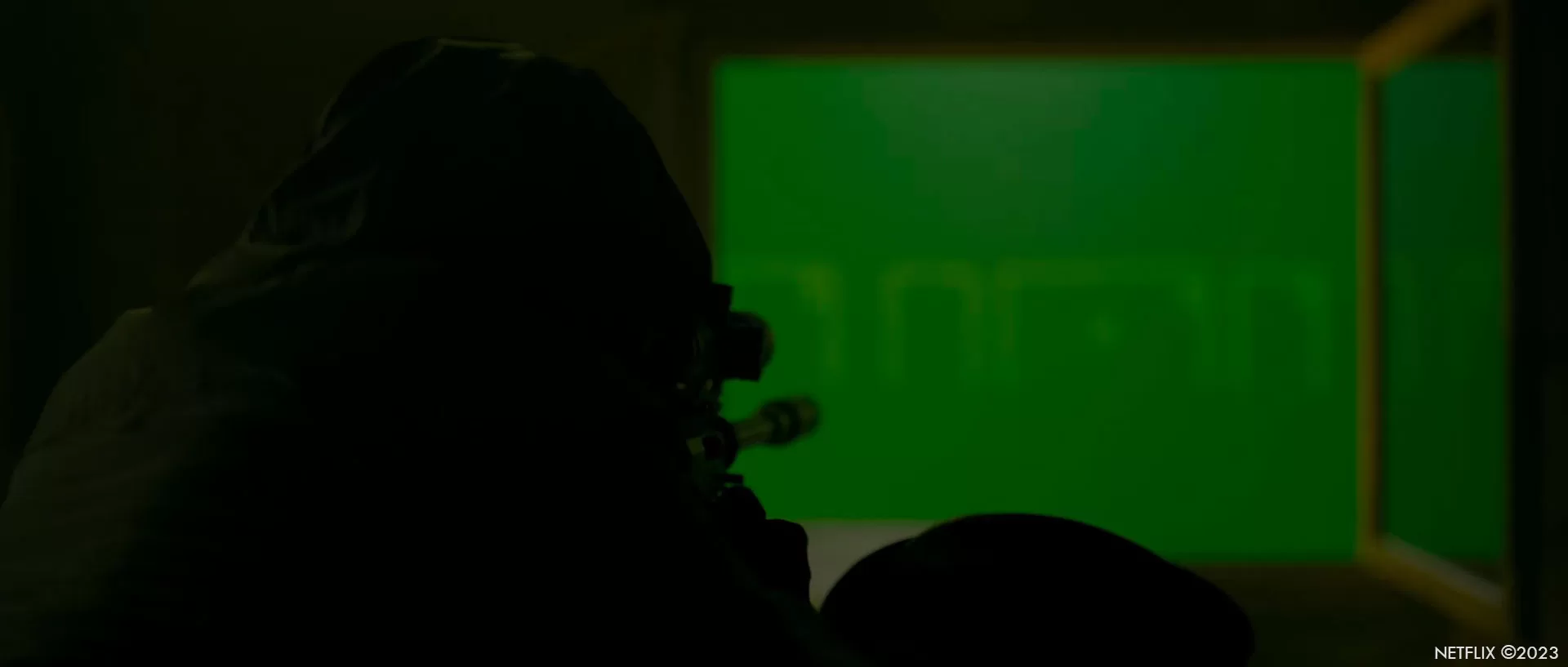
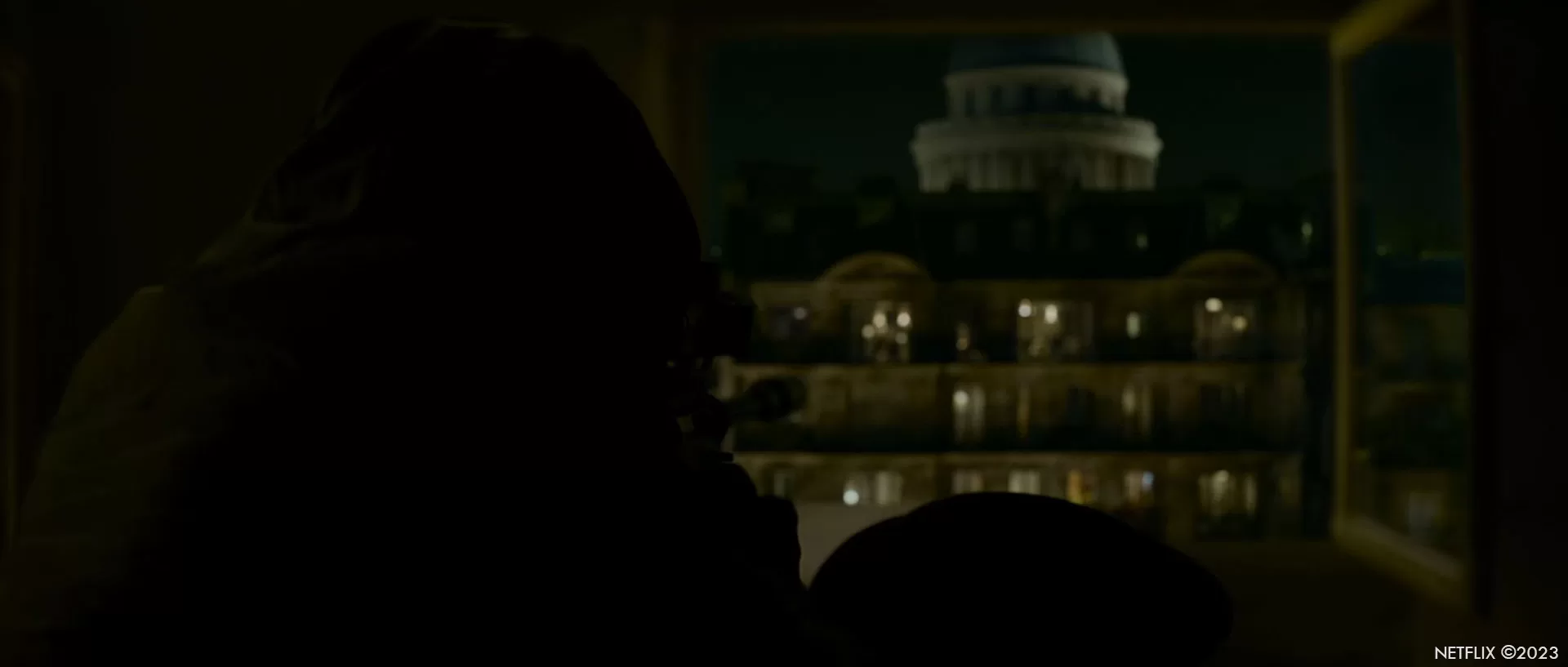
Which location was the most complicate to create?
Wei Zheng // Not sure I can use the word complicated to describe our experience. Each location has its character. Unlike some shots in other films with very sophisticated camera moves flying through space, there are a lot of elements in the frames. A lot of shots in The Killer have relatively subtle camera moves which actually required the VFX works to hold up really well through camera’s scrutiny since the camera looks at it straight on most of the time.
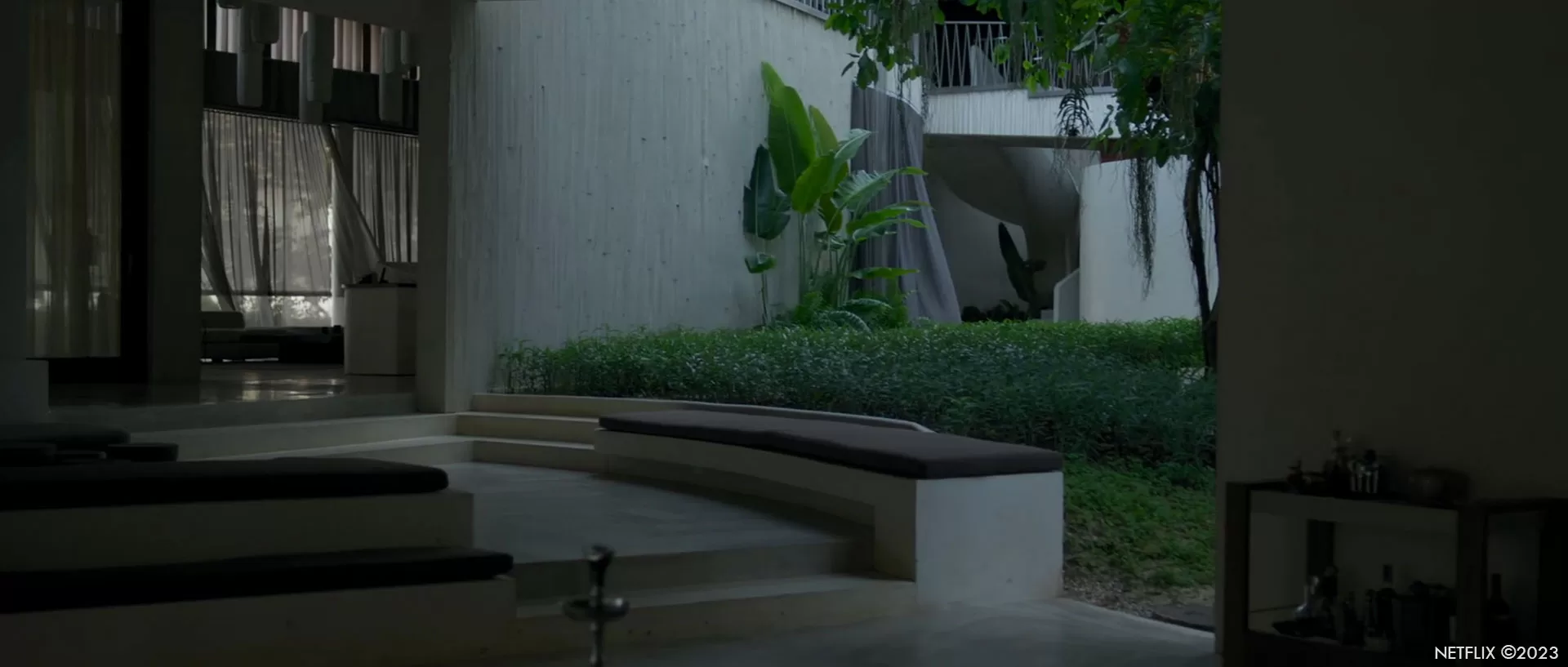
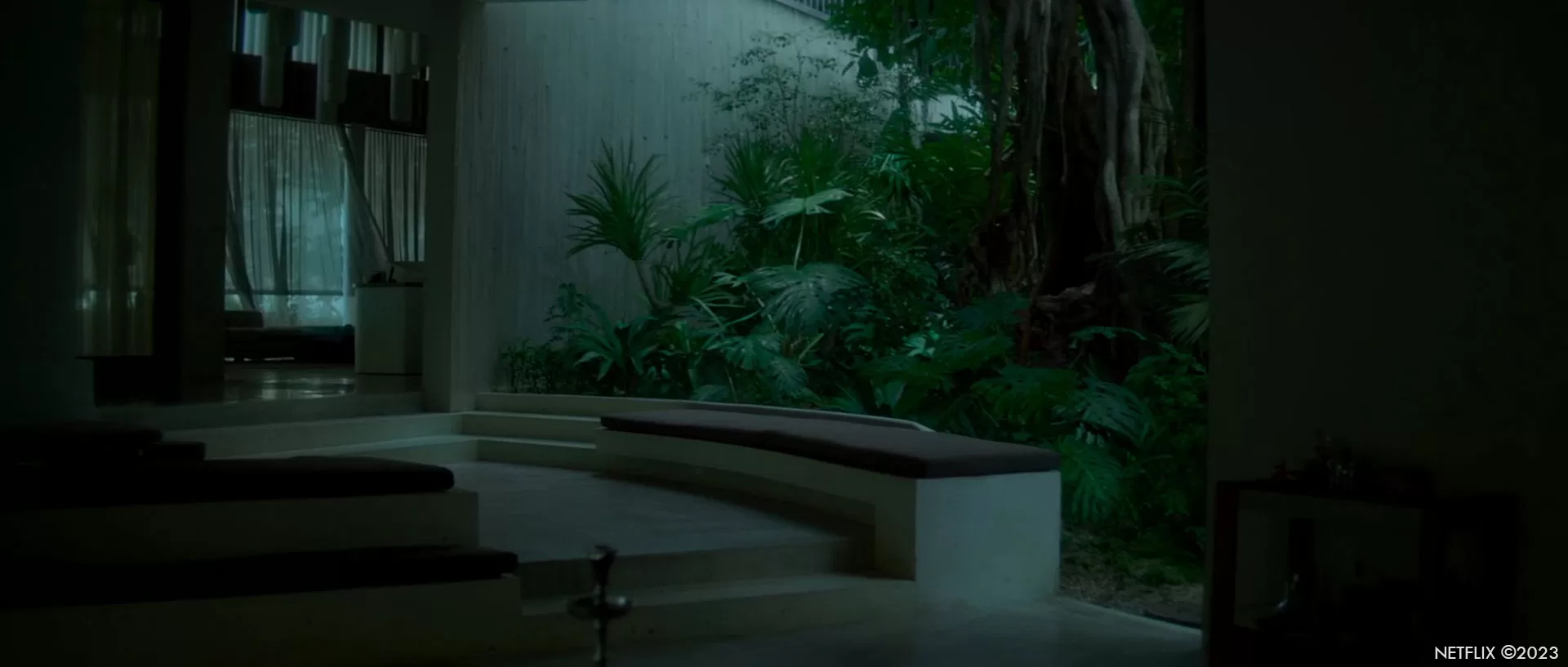
How did you enhanced the gore aspect?
Yabin Morales // We worked on a couple of the bullet impacts that are key moments in the film. For the taxi gunshot we decided to use real animal brain bits mixed with fake blood blasted out of an air gun inside a car, this way, we made sure what you see on screen is as close to reality as we could make it with the consistency and texture of real objects hitting the windshield.
James Pastorius // The Savage team did a lot of CG blood enhancements for the scene in the Florida house, where the killer gets into a violent brawl with the Brute.
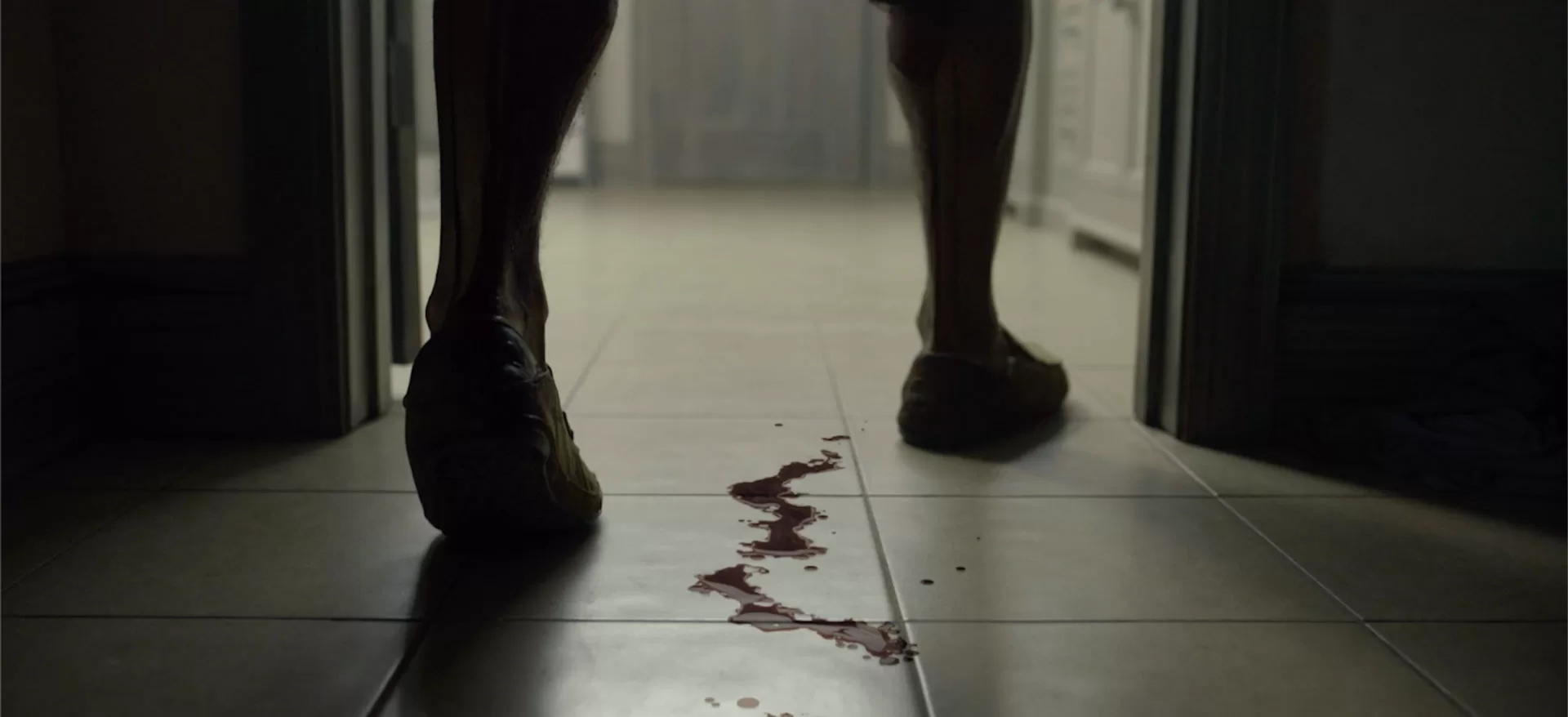
What kind of invisible effects was the most complicate to create?
Wei Zheng // The subject that is right in front of the camera or looked at straight on is the most challenging to make it believable. Not necessarily complicated to create.
Yabin Morales // During the whole sequence where Killer shoots nails at Hodges (Charles Parnell), his entire shirt is digital. Given that this was a very front and center element, It had to look natural like there were no visual effects, unnoticed on screen, requiring intricate composition and animation work to match the real actor. Many hours spent on this one!
James Pastorius // During that close quarters, combat with The Brute, the Savage team created blood and sweat flying with every punch, CG debris flying with every crash into drywall or through a door. We made glass smash over their heads and bullets blow through doors. Each effect was created with collision simulations in Houdini using digital doubles of the actors.
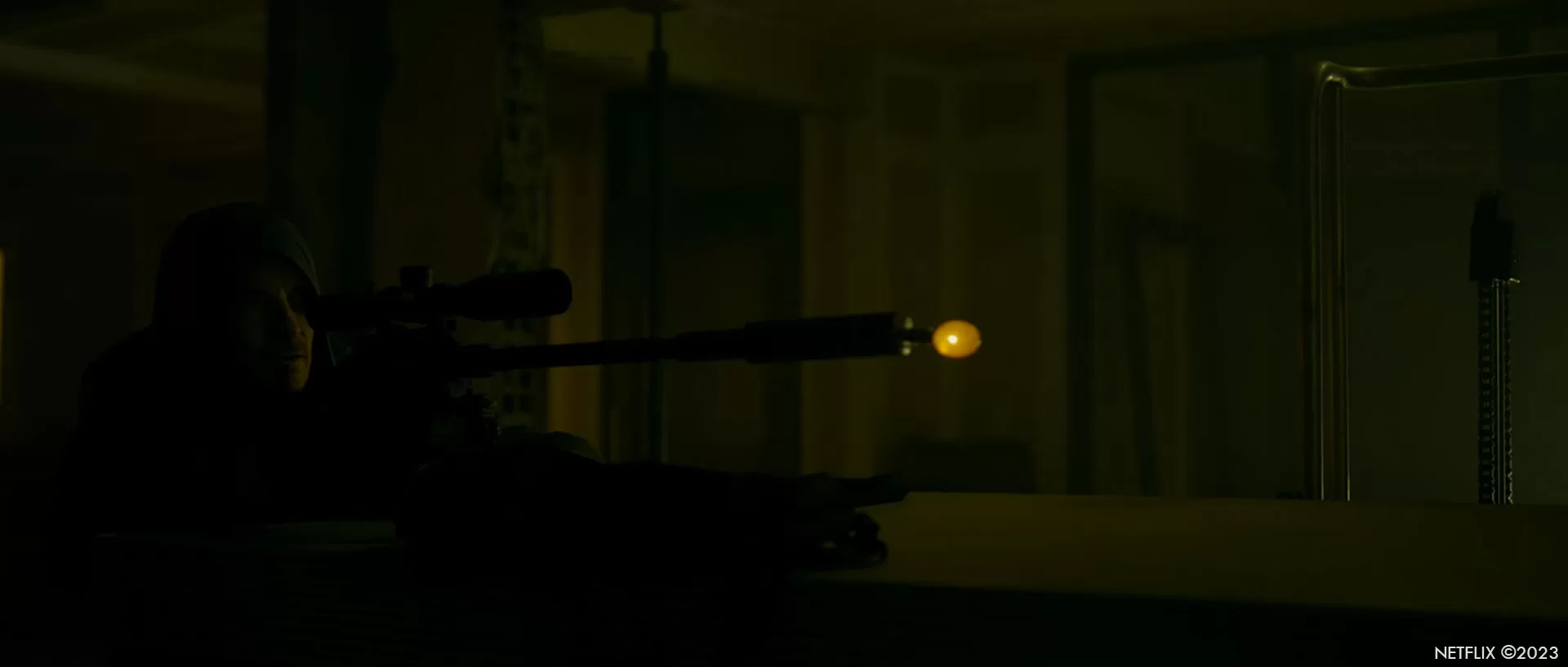
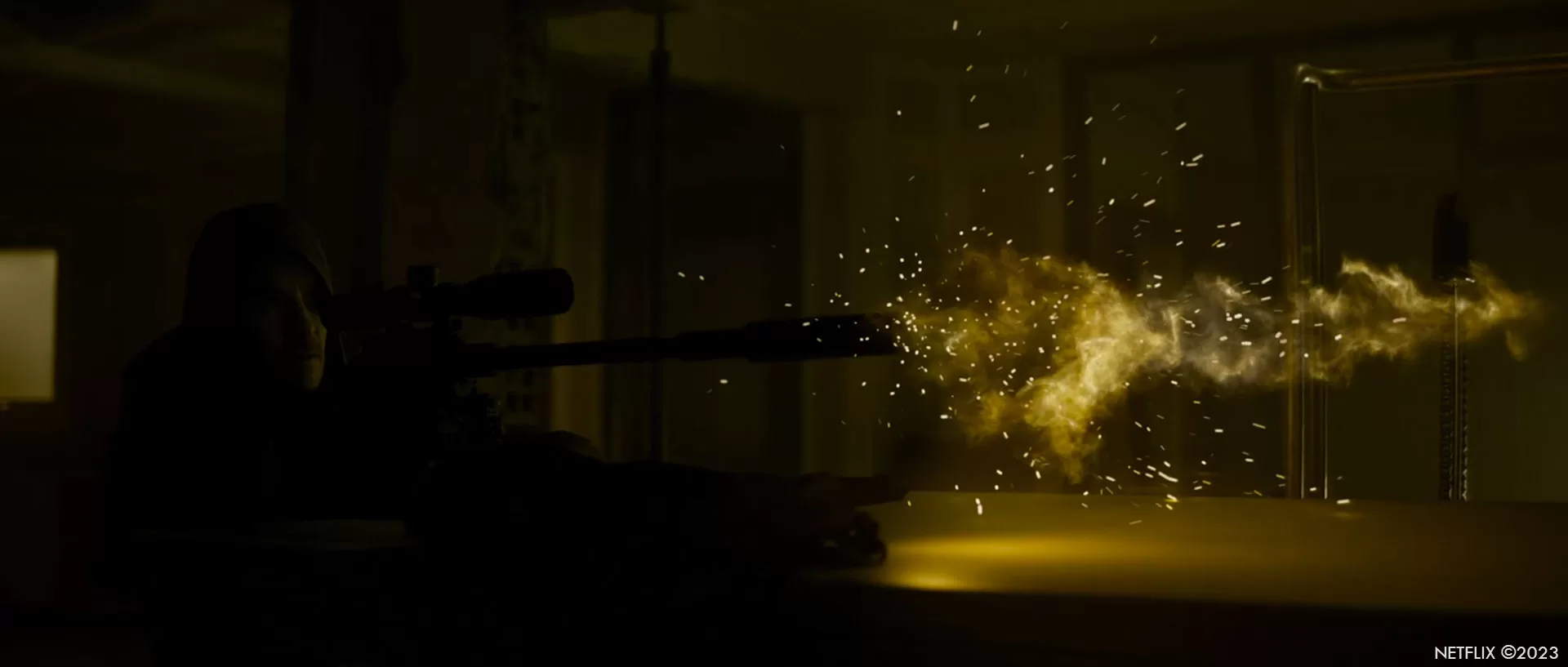
Did you want to reveal to us any other invisible effects?
Wei Zheng // Artemple also did some establishing shots for different chapters. There are views of Florida swamp when The Killer tiptoes on the lower and upper decks before entering The Brute’s house. There are shots where we put hanging foliages, vines under the bridge to enhance the environment when The Killer asks the Taxi driver to pull up where he eventually kills him. There was a shot of a train station which was shot in Chicago but David wanted it to look like New York central stationish. There are several shots showing The Killer following The Brute to a Casino which required Florida cityscape on the frame left and Neon signs of Cowgirls, Casino signages, etc. There is a shot of The Killer rushing to the hospital to see his lady. David shot the scene in Long beach. Visual effects helped to make it look like it was in the Dominican Republic. One other shot I’d like to mention is an airport hotel shot to which visual effects add cumulus clouds, palm trees, and a huge airplane flying right in front of the camera with the hotel close by to sell David’s idea that ‘the hotel is unfortunately located near an airport runway.’
Yabin Morales // There was lots of digital car work done when Killer is walking on the streets at night following The Expert (Tilda Swinton) as well as some shots in the Dominican Republic. There are also lots of Sky replacements scattered throughout the film. DF is very meticulous with geometry and cleanliness. You wouldn’t believe it but in a fair amount of shots there’s an extensive effort in correcting axles, refining lines in architecture and perfecting the environments. This kind of diligent work also extends to cleaning imperfections, removing dust, marks and eliminating any element that might disrupt the frame across all of the sequences.
James Pastorius // Throughout the film, we placed a lot of moving and parked CG cars in scenes to make the streets appear to be busier than they were on the day.
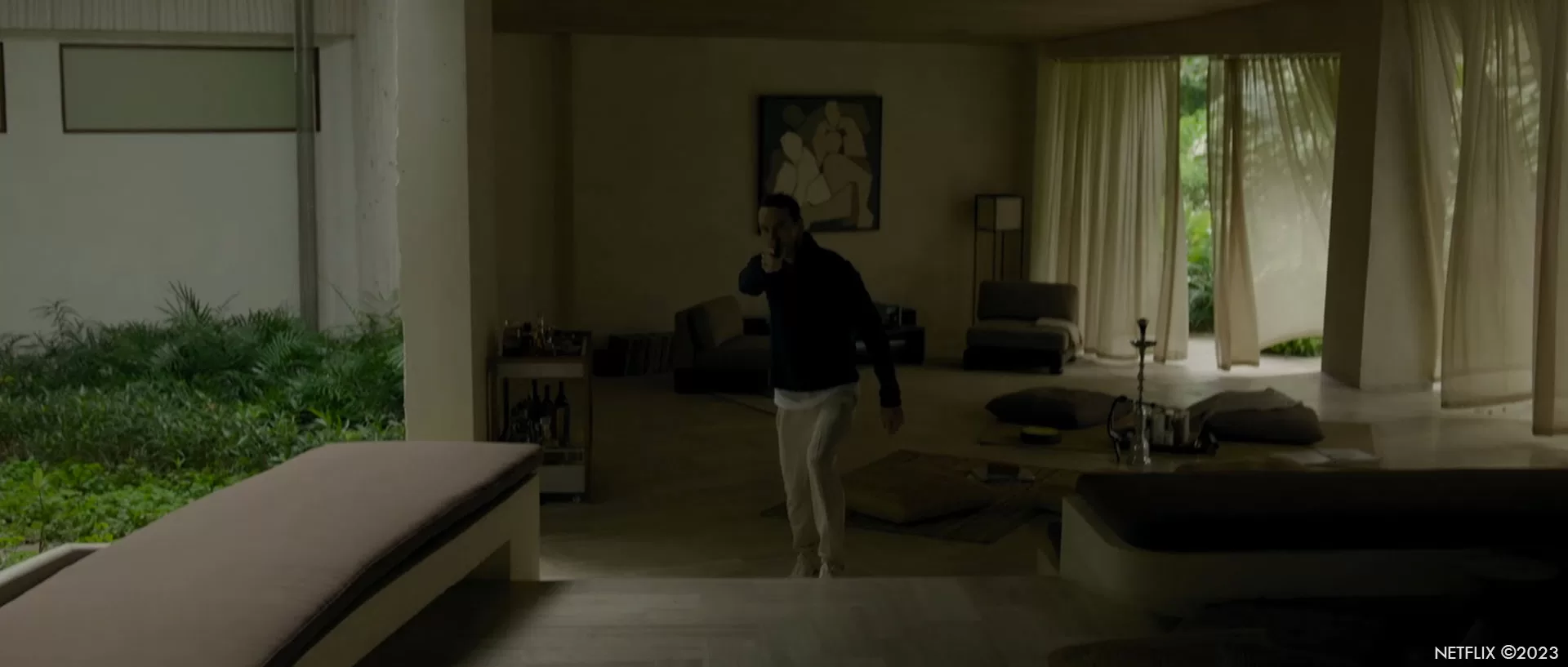
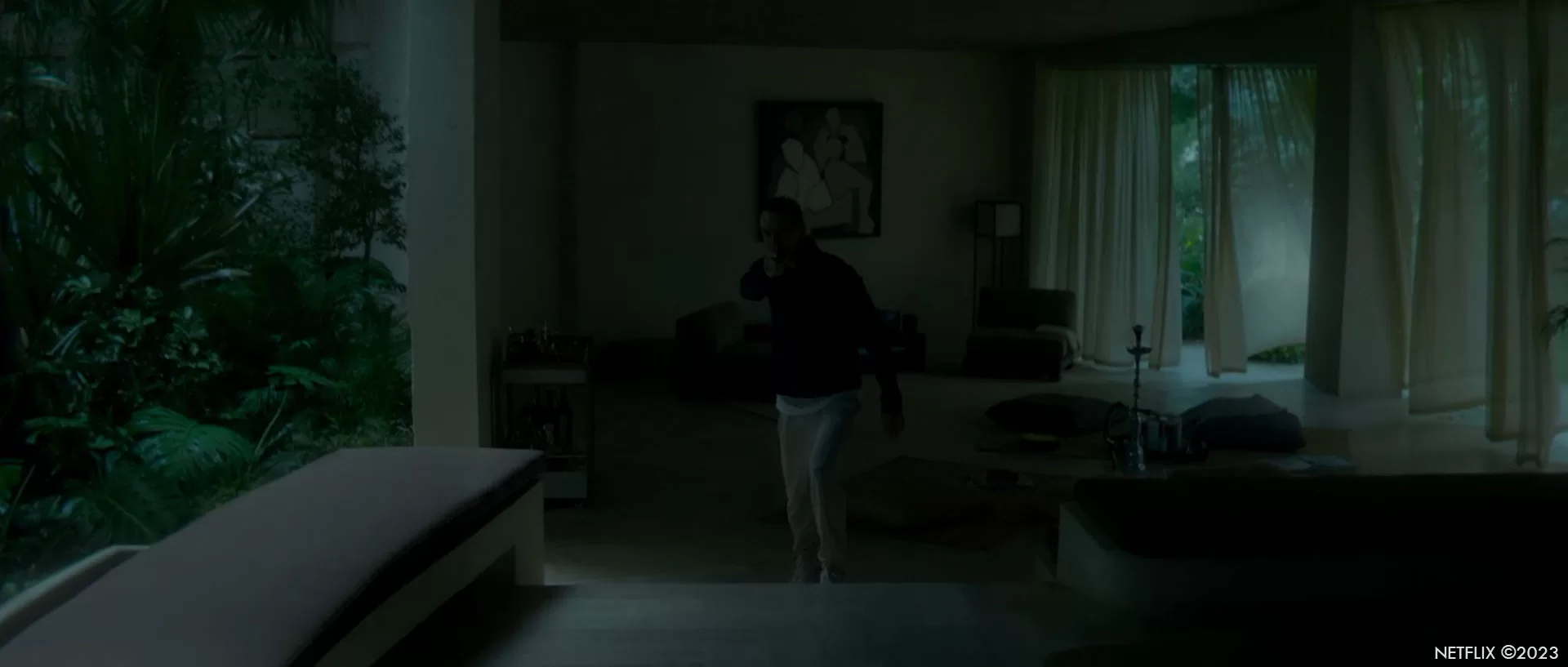
Is there something specific that gives you some really short nights?
Wei Zheng // The night time shots of the target building keep me thinking of its realistic quality, the aesthetic, and its relation with the foreground elements. I find simple things are actually hard to make believable.
Yabin Morales // Working with DF is always a challenge; he’s a director who pays attention to all details. No effect is too minor because he considers each element crucial for constructing the image and the story. Working in 8k adds an extra layer of complexity to each effect, no matter how small. A higher level of detail and processing was necessary to meet the quality requirements.
What is your favorite shot or sequence?
Wei Zheng // The six sunny day time shots of The Killer looking at the target building holding his scope came out well. The look of the target building with its surroundings met expectations as well.
Yabin Morales // The sequence of the Molotov bomb explosion and the apartment fire comes to mind. It’s a crucial moment in one of the film’s high points. On set, Killer had just a small flashlight in his hand, so we crafted everything from the bottle toss to the explosion and the apartment fire. To make the bomb explosion in the apartment feel authentic we went hands-on and constructed the bottom of the sofas and set them on fire. Mixing practical effects with CG was the trick to getting what DF had in mind and attaining a realistic look.
James Pastorius // The Brute fight scene was a lot of fun to work on.
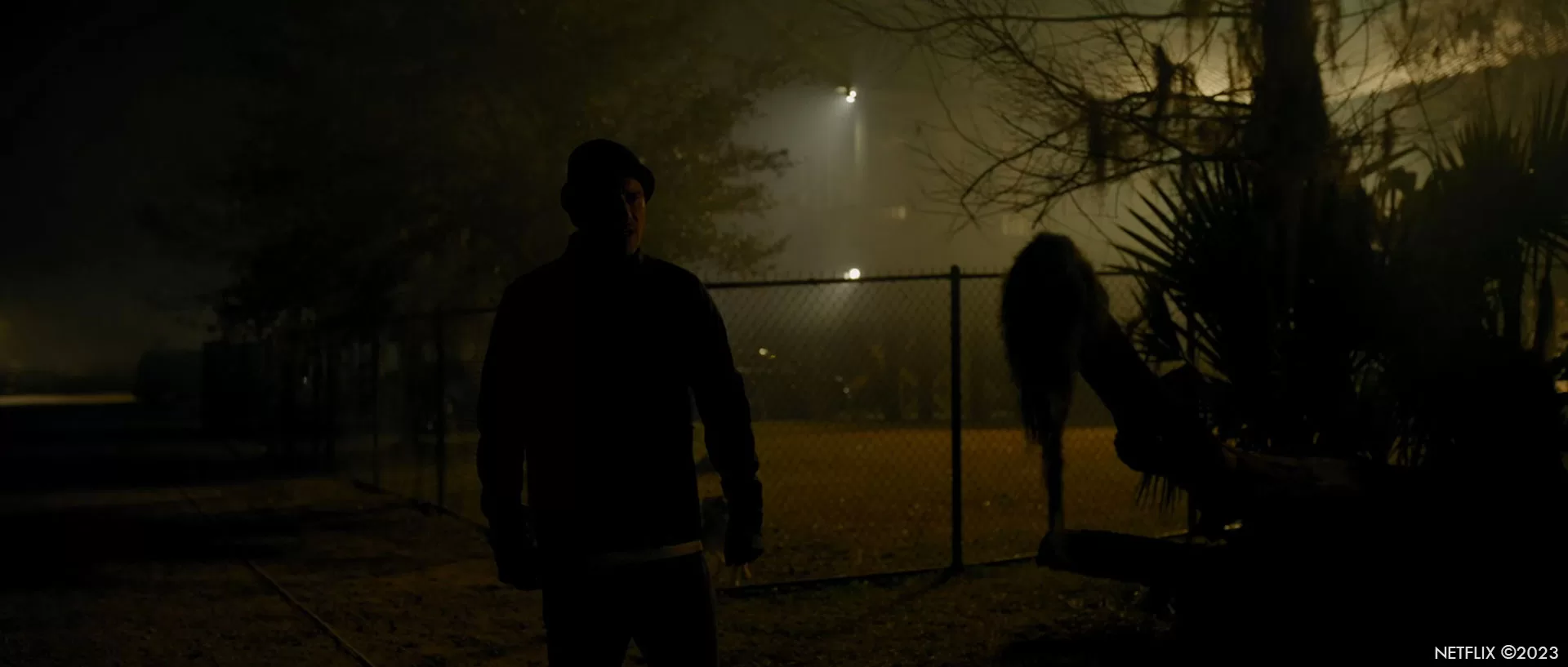
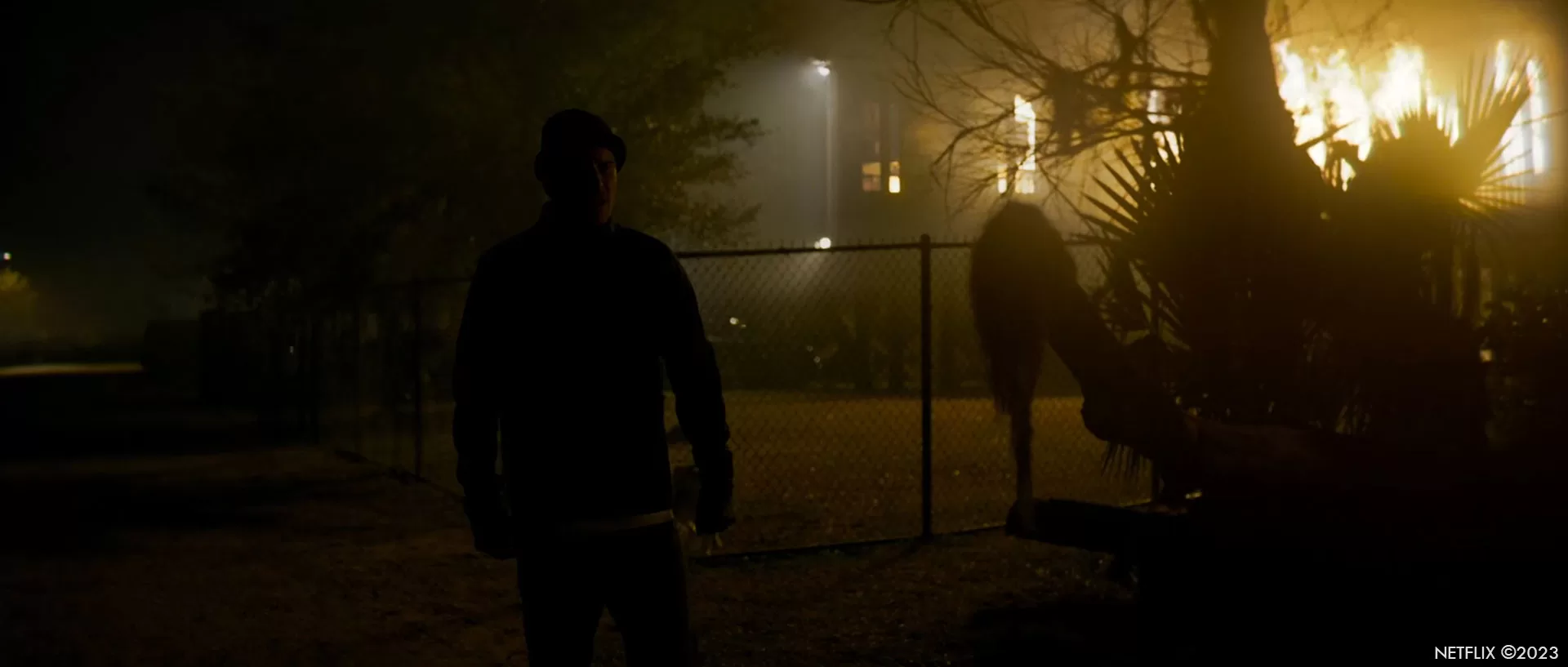
What is your best memory on this show?
Wei Zheng // The last meeting discussing the night time target building I had with David, our editor Kirk, and colorist Eric was the most memorable. I initially thought we were good with its look. And then I learned that there was something not quite ringing the bell yet. I remember I came out of the meeting a bit heavy hearted since the work quality wasn’t there yet, plus over 80 night time shots would need a revision. After two weeks of thinking about David’s feedback, I got down to work and came up with a hero mockup of the night time environment. It’s the version we see on the big screen. Looking back, I’m so happy David made the call to revisit the look of the night time environment. The third time is definitely a charm. The current version is much better quality. I’m very grateful to David’s great version and direction.
Yabin Morales // Working with David Fincher is always a remarkable experience; his meticulous eye for detail pushes you to step up your game, be more creative, and grow as a supervisor. When you get a ‘Wow!’ in response to a shot you’ve submitted, it’s the best feedback in the world.
James Pastorius // When you get a note on a shot like « That’s F*cking cool!! » I remember that stuff.
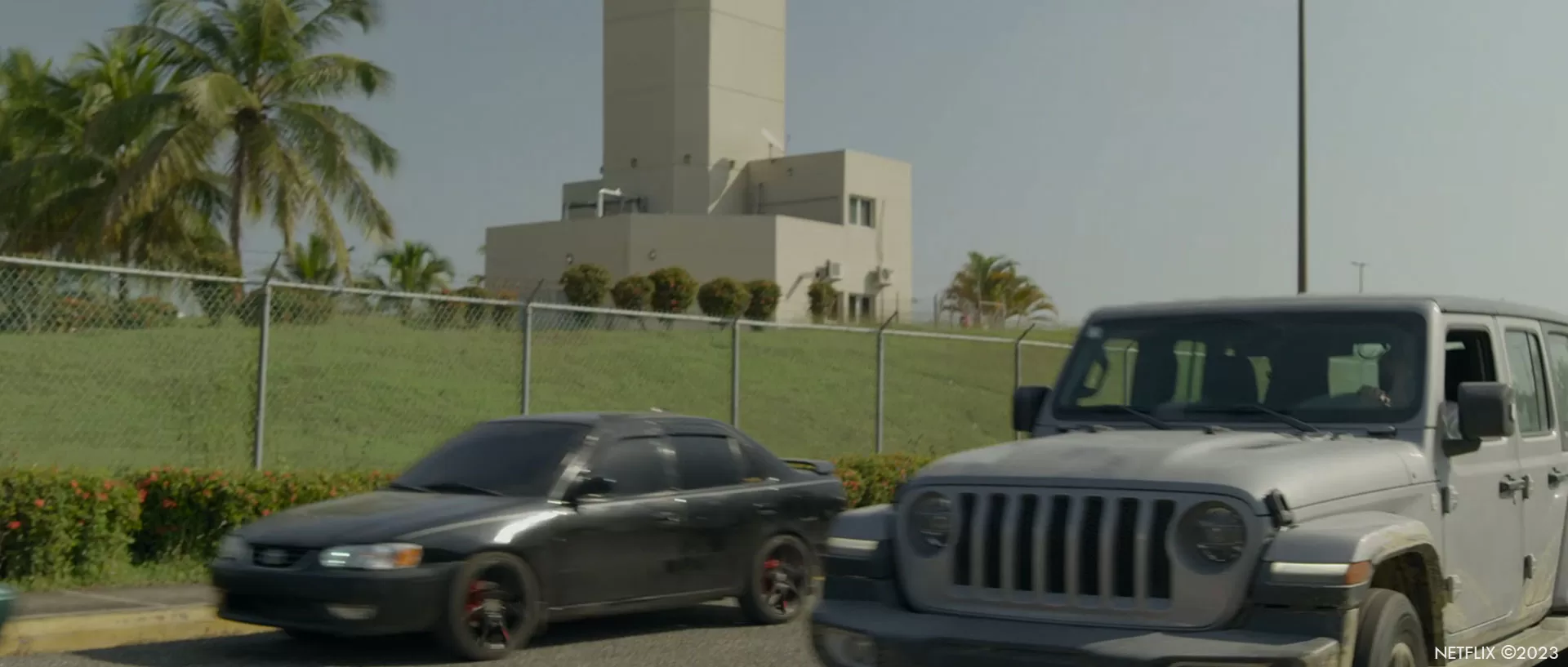
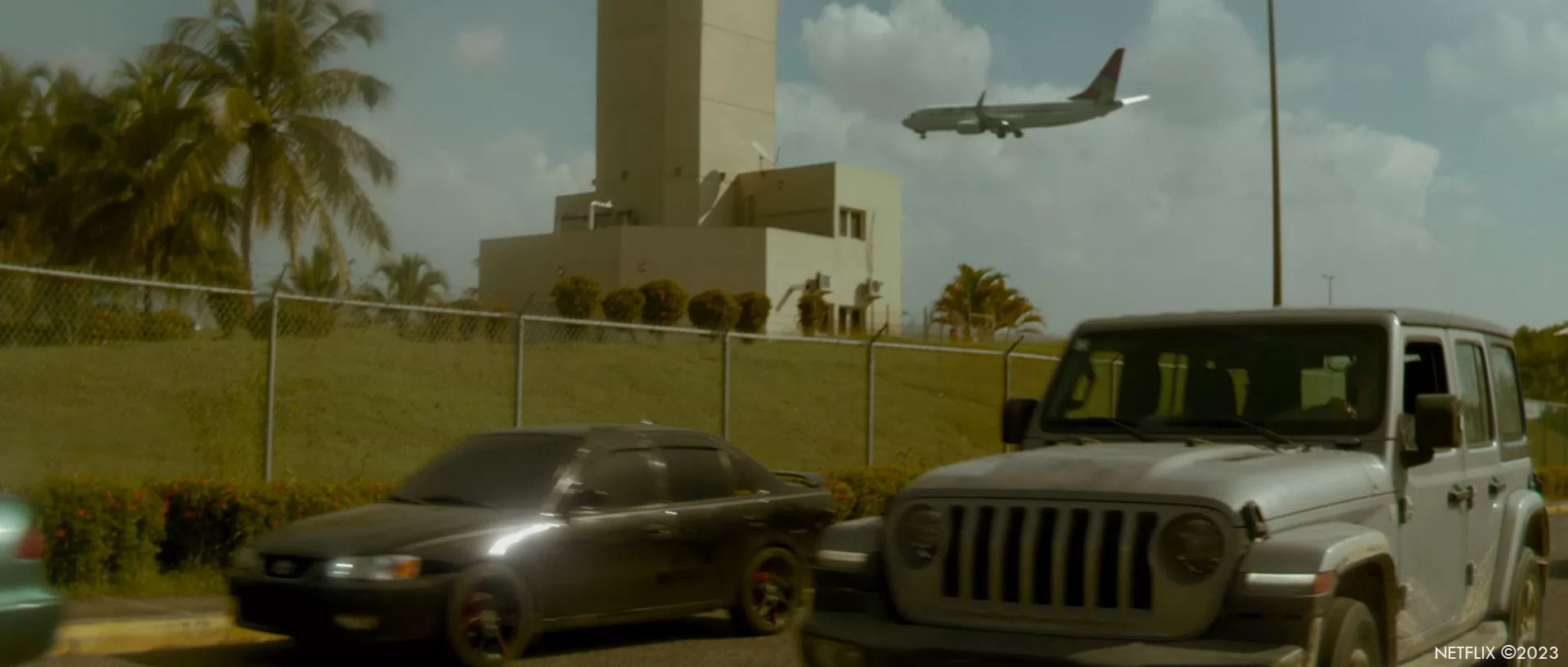
How long have you worked on this show?
Wei Zheng // About a year.
Yabin Morales // 11 months, from the first shot to the final delivery.
James Pastorius // About 18 months
What’s the VFX shots count?
Wei Zheng // There are 800 plus shots that require VFX work. The number doesn’t include shots that need stabilization.
Yabin Morales // 260 shots.
James Pastorius // Overall, I believe it was 800. Savage worked on about 200 of those.
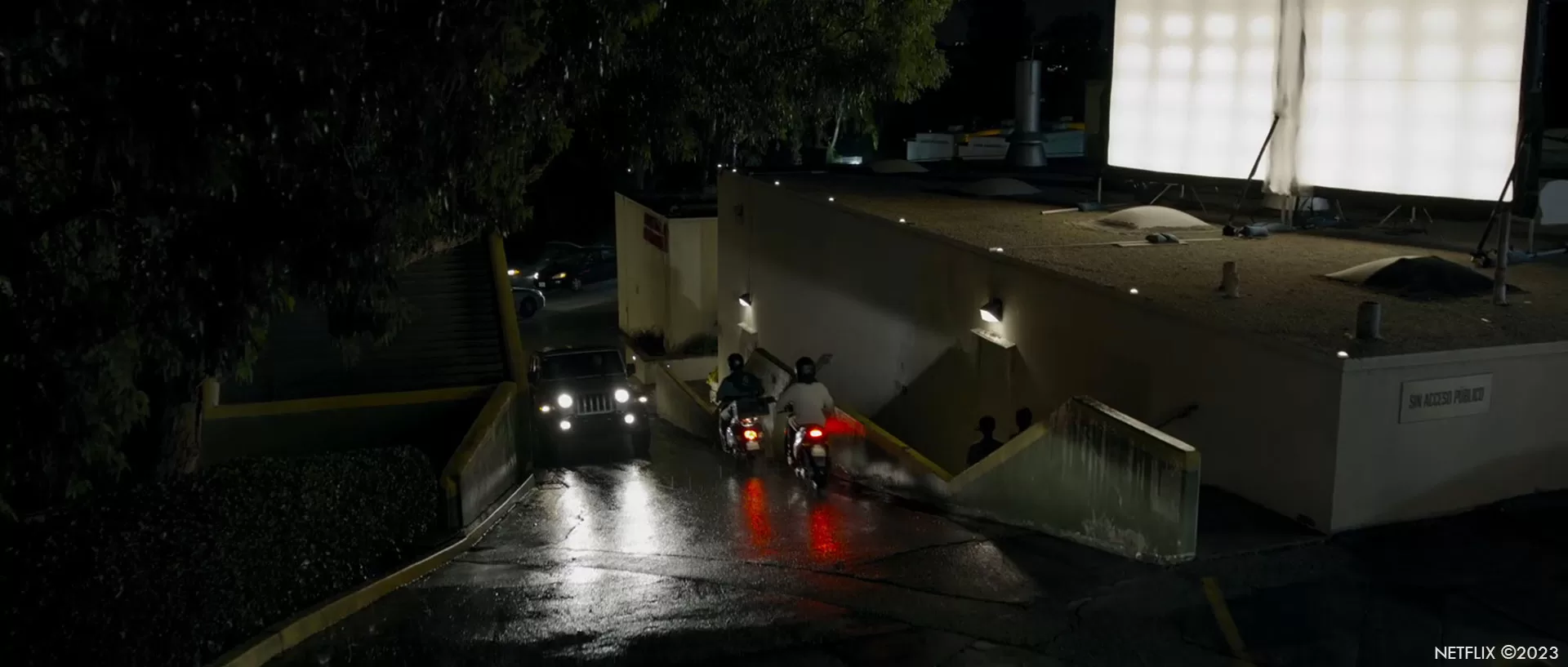
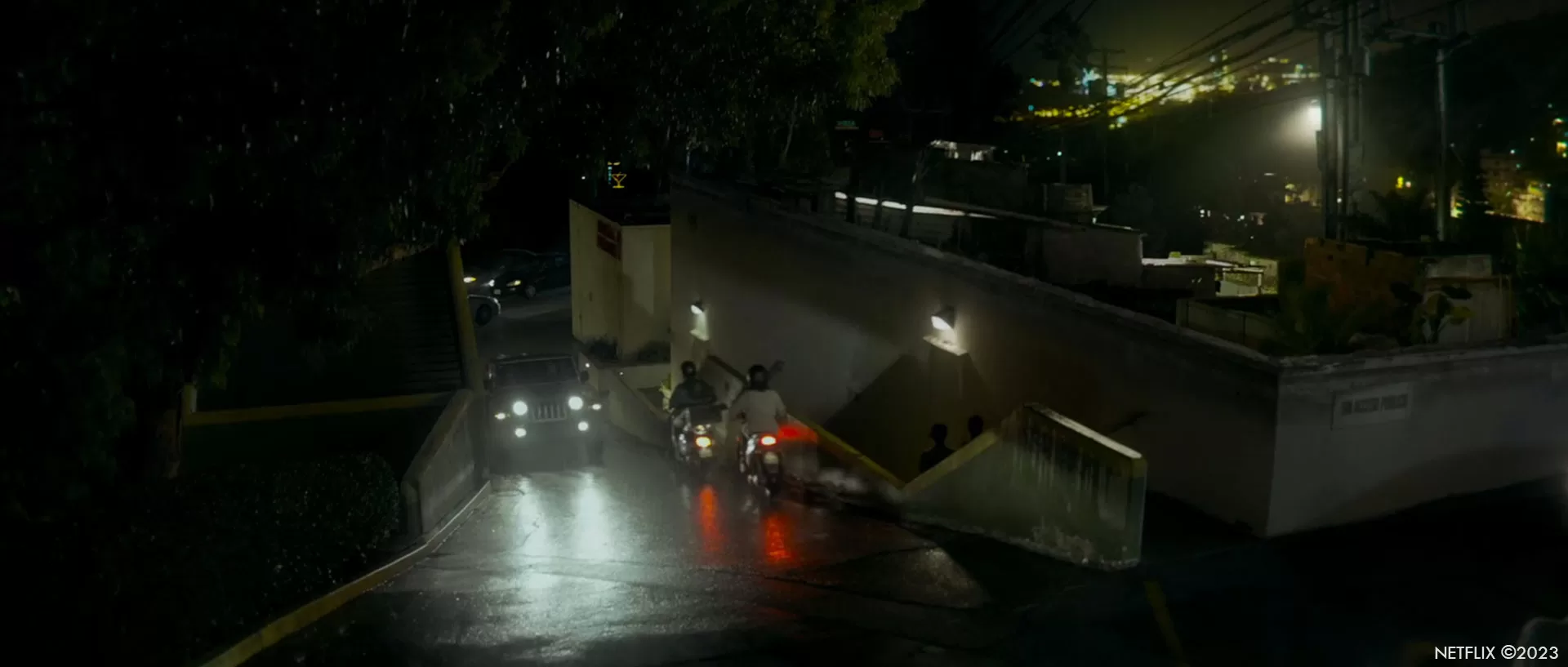
What is your next project?
Wei Zheng // I’m looking forward to working on David’s next project.
Yabin Morales // Luckily given where our industry is right now we’ve got several projects at Ollin. Right now we’re deeply immersed in sequences for a remastering project, a local film, and two series for a streaming platform early next year.
James Pastorius // I could tell you but then…
A big thanks for your time.
© Vincent Frei – The Art of VFX – 2023






